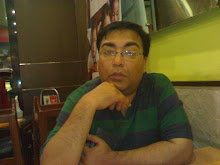 Breast Cancer is one of the most common cancers in India. Latest data indicates that the incidence of Breast Cancer in India is on the rise and is currently pegged at 30 per 100000 women. While this is much lower than what the US reports (100 per 100000 women), one suspects that considering India’s abysmal rural healthcare infrastructure, the actual incidence of Breast Cancer would be much higher.
Breast Cancer is one of the most common cancers in India. Latest data indicates that the incidence of Breast Cancer in India is on the rise and is currently pegged at 30 per 100000 women. While this is much lower than what the US reports (100 per 100000 women), one suspects that considering India’s abysmal rural healthcare infrastructure, the actual incidence of Breast Cancer would be much higher.
Experts agree that the best way to treat breast cancer is to detect it early. Technology now allows for detection of very small tumours. Mammography, which essentially is an X-Ray of the breast allows for early detection of the tumour. It is recommended that women in India must undergo a breast cancer screening every year after 40 years of age. There has been some debate on whether the right age for screening should be 40 years or 50, most experts agree that in India, 40 years is the right age for breast cancer screening.
A Breast Cancer program must revolve around breast cancer screenings. The biggest barrier to a screening program is the fear of the disease itself. This may sound ironical and completely irrational but most women do not undergo a breast cancer screening because they fear the outcome of the tests. Not knowing about the disease seems to be a lot better than confronting the reality. Unfortunately, this ostrich like attitude leads to late detection of the disease – many a times it is just too late.
Breast Cancer related communication should be handled with empathy and care. One of the key tasks of the communication should be to educate women to come in for regular annual mammograms. The communication should sensitively address the fear of the disease and highlight early detection as the biggest weapon against it. It should be subtle yet powerful enough to get women to come in for regular screenings. Many hospitals make the mistake of trying the ‘fear’ route by highlighting the horrific aspects of the disease in their communication. This I believe is futile and may end up scaring women further. I have also come across Breast Cancer related communication, which is frivolous and in bad taste. Needless to say it serves no purpose.
Involving Breast cancer survivors in helping spread the message is a great way of attracting women for screenings. At Artemis Health Institute in Gurgaon we worked with organisations like ‘Can Support’ on Breast Cancer awareness programs. Many of these organisations are run by cancer survivors and they bring an uncommon zeal (borne perhaps by their personal experiences in dealing with cancer) to the task of creating awareness and fighting the battle against cancer.
It would also help if the hospitals can organise frequent breast cancer awareness programs and invite women to come in for screenings. The hospitals should also organise sessions for women, where in trained experts can demonstrate and impart ’Self Breast Examination’ techniques. Hospitals should also publish literature offering information about the disease, common symptoms, benefits of early screening and also the treatment of the disease.
In order to attract more and more women to breast cancer screenings hospitals should bring down the cost of a mammogram. The cost per scan of the machine is negligible and hospitals should try to amortize the capital cost over a larger number of screenings. Hospitals today charge Rs. 1500-Rs. 2000 for a scan. This can be easily halved if the patient volumes go up.
Breast Cancer is a dreadful disease. No one knows what exactly triggers it. There is no scientifically proven method of avoiding it. The only way to fight the disease is by detecting it early. Technology today allows early detection and a complete cure.
This is the simple message, which a good Breast Cancer Communication program must deliver over and over, again and again, ad- nauseum.
 Websites of Indian hospitals are hardly something to write home about. They are mostly poorly done, difficult to navigate and usually the information lies buried so deep that it tests ones patience to get the relevant information . The other day, it took me close to 20 minutes and numerous clicks to locate the address of a hospital from its website. I needed the address to send a Diwali card to a friend who works at the hospital and try as I might, I just did not seem to find the address of the hospital.
Websites of Indian hospitals are hardly something to write home about. They are mostly poorly done, difficult to navigate and usually the information lies buried so deep that it tests ones patience to get the relevant information . The other day, it took me close to 20 minutes and numerous clicks to locate the address of a hospital from its website. I needed the address to send a Diwali card to a friend who works at the hospital and try as I might, I just did not seem to find the address of the hospital. A couple of weeks back I had written about my experiences at the Indraprastha Apollo Hospitals. Following the publication of that post, I received a call from the hospital. I must say I was very surprised. The caller was a lady who said she looked after service quality and was calling to learn more about my experiences at the hospital. While apologising for what we had to go through the hospital, she wanted more details and appeared keen to fix the problem. Subsequently I also received a call from my former colleague Usha Bannerjee, who presently heads nursing at the hospital. She too admitted that they have been having ’service’ issues and they are trying their best to rectify these.
A couple of weeks back I had written about my experiences at the Indraprastha Apollo Hospitals. Following the publication of that post, I received a call from the hospital. I must say I was very surprised. The caller was a lady who said she looked after service quality and was calling to learn more about my experiences at the hospital. While apologising for what we had to go through the hospital, she wanted more details and appeared keen to fix the problem. Subsequently I also received a call from my former colleague Usha Bannerjee, who presently heads nursing at the hospital. She too admitted that they have been having ’service’ issues and they are trying their best to rectify these. The Union Health Minister Ghulam Nabi Azad appears to be busy shooting the breeze by announcing vague policy changes involving setting up of Medical Colleges through private capital and in collaboration with government run district hospitals. The minister who is well known for putting his foot in the mouth, recently announced at a FICCI conference that the government is considering relaxing the norms for setting up medical colleges by the private sector. He also announced that these colleges can be affiliated with the government owned district hospitals, thus doing away with the requirement of a teaching hospital to be attached with the medical college.
The Union Health Minister Ghulam Nabi Azad appears to be busy shooting the breeze by announcing vague policy changes involving setting up of Medical Colleges through private capital and in collaboration with government run district hospitals. The minister who is well known for putting his foot in the mouth, recently announced at a FICCI conference that the government is considering relaxing the norms for setting up medical colleges by the private sector. He also announced that these colleges can be affiliated with the government owned district hospitals, thus doing away with the requirement of a teaching hospital to be attached with the medical college.